-
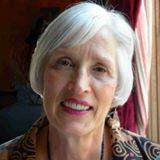
Sybil Malinowski Melody, Mundelein class of 1970, was interviewed by Loyola graduate student, Scarlett Andes. Malinowski Melody discusses her studies in the social sciences at Mundelein and particularly appreciates the broad spectrum of classes she was able to take part in. Malinowski Melody characterizes the changes at Mundelein she witnessed during the 1960s as a transformation in which the school went from a “finishing school for young girls” to a “real academic force.” Melody outlines the academic accomplishments and inspiring pedagogy of her various professors, including Dr. Irene Meyer and Dr. Russel Barta. This interview also includes Malinowski Melody’s experiences as a student worker in rehabilitation at the Chicago State Mental Hospital.
Content Note: These collections may include language or descriptions of events that may be upsetting to some users.
-
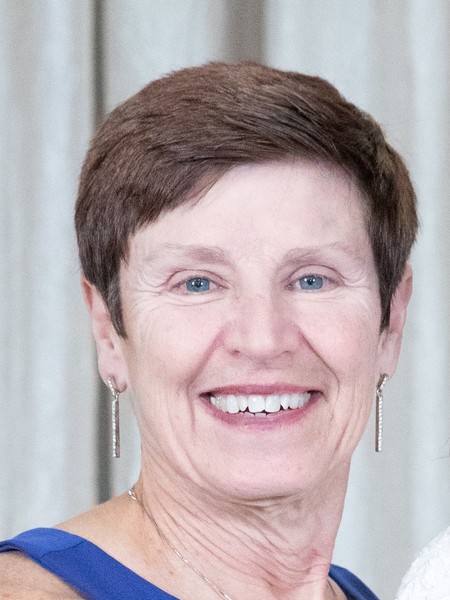
Chicagoan, Cathy McLeod, Mundelein class of 1971, was interviewed by Loyola graduate student, Regina Hong. McLeod was a gifted math student who attended high school classes at the Illinois Institute of Technology. McLoed recalls that her classes were engaging, and her teachers, especially her instructor in argumentative writing, taught her critical thinking skills. During her tenure at Mundelein, McLeod opened a coffee house for her classmates, volunteered for Upward Bound, a summer program for inner city youth, and worked at an IIT affiliated computer center. Many changes took place during McLeod’s time as a student at Mundelein during the late 1960s and early 1970s. Those transformations, including a push for social justice and student activism after the 1970 shooting at Kent State University, framed McLeod’s experiences as a student at Mundelein.
Content Note: These collections may include language or descriptions of events that may be upsetting to some users.
-
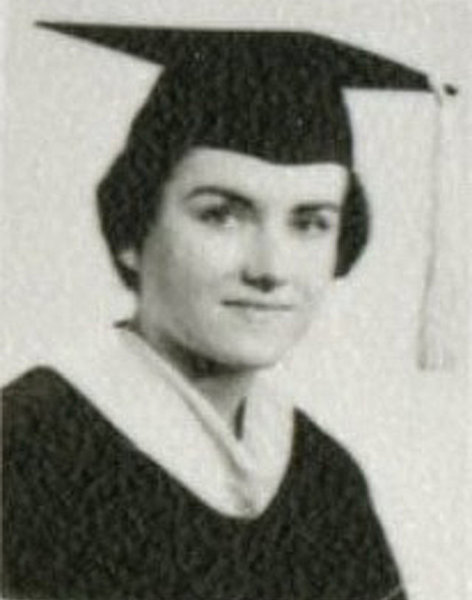
Brigid Duffy Gerace, Mundelein class of 1960, was interviewed by Loyola graduate student, Regina Hong. Gerace recalls that during her years as a student, she juggled classes and employment. She was no stranger to hard work. From the time she was young, Gerace held a variety of jobs from hauling coal and selling freezers to her stint as an elevator operator at Marshall Fields. During her student years, Gerace was involved in the drama department and was an actor and crew member of the Mundelein drama group, the Laetare Players. One of Gerace’s most vivid recollections of her student life at Mundelein was the “magical” marble steps of the skyscraper building which no one ever used except for at graduation. Gerace finishes the interview by recalling her post college career as a Goodman School of Drama graduate student and her years as a teacher and well-established Chicago actor.
Content Note: These collections may include language or descriptions of events that may be upsetting to some users.
-
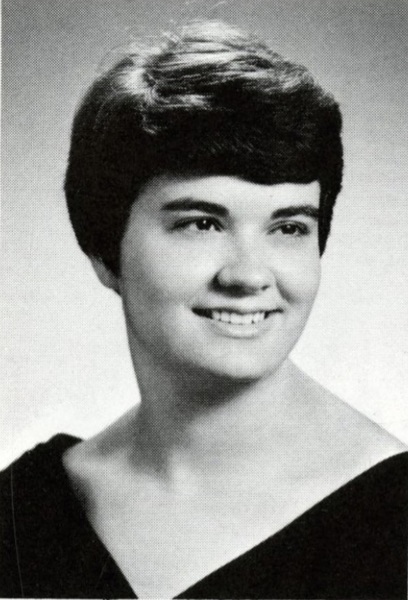
Mary Frances Consola, 1968 Mundelein College graduate, was interviewed by Loyola graduate student, Regina Hong. As a student, Consola organized variety shows and participated fully in her dormitory life at Northland Hall and Coffey Hall. Consola recounts her rigorous coursework in mathematics and economics, her study group called “Null Set,” and the breaks she and her classmates took on the lake. Consola also discovered literature and theology at Mundelein and characterizes her student years as “the full college experience.” The 1962-1965 second Vatican Council had a major impact on her life during her time as a student. Consola concludes the interview by recollecting her encounters with other Mundelein alumni through the years.
Content Note: These collections may include language or descriptions of events that may be upsetting to some users.
-
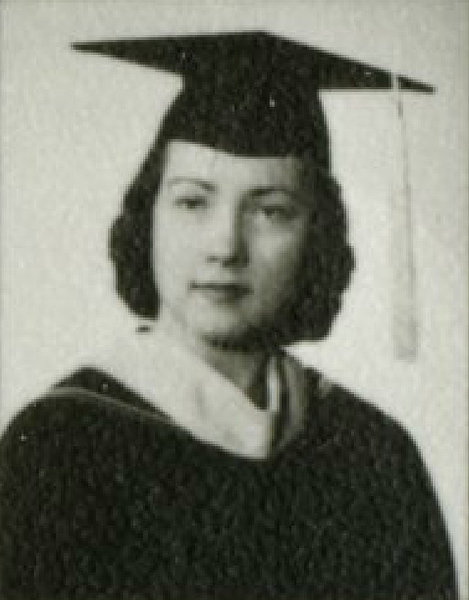
1959 Mundelein College graduate, Marge (Marguerite) Phillips Britton discusses her student life and subsequent career with Loyola graduate student, Scarlett Andes. Britton describes her English and journalism classes and her teachers, in particular the nuns, whom she characterizes as professional women. During her college years, Britton participated in multiple extracurricular activities including the debate team and the Skyscraper student newspaper. Britton’s social life at Mundelein is featured in her story, including her vibrant encounters with other students and faculty in Piper Hall, the Mundelein building’s elevators, the swimming pool, and the tea room. Britton recounts her early career as both a journalist and a mother and completes the interview by discussing women’s expanding career options.
Content Note: These collections may include language or descriptions of events that may be upsetting to some users.
-
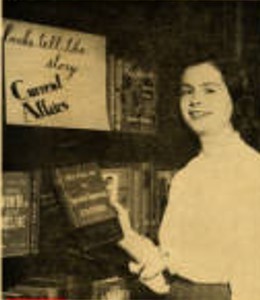
Member of the class of 1951, Kathryn Quinn Knowles recounts her memories as a student at Mundelein, particularly her work as a staff member for literary magazines, Quest and The Review. Quinn Knowles recounts her experiences with several Mundelein faculty members such as Sister Richard, Sister Clara in the library, and Sister John Michael Dee. Quinn Knowles recounts several visitors to Mundelein Assemblies including author, Graham Green and ex-communist Catholic convert, Elizabeth Bentley.
-
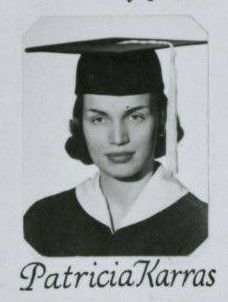
Grevas discusses with Sister Mary Alma Sullivan, BVM her life trajectory. She was born to Greek immigrants in Chicago in 1930. She explains that although her parents raised her in the Greek Orthodox Church, she learned more about Christianity through Catholic schools, including Mundelein College. At Mundelein College, she did well in her studies, graduating in 1951. Following graduation, she taught for a few years before getting married. Grevas concludes by talking about her community service work in her hometown of Rock Island, Illinois.
-
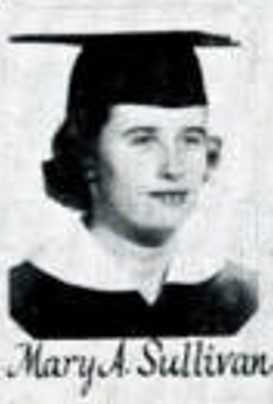
A member of the Mundelein 1951 class, Sister Mary Alma Sullivan, BVM returned after graduation to teach English for over two decades. Sister Mary Alma recounts memories of her childhood in Chicago and her extended family gatherings in Freeport, Illinois where her grandfather played fiddle. Sister Mary Alma discusses the “double sided” nature of Mundelein College training in which the students were taught both to become both housewives and rigorous burgeoning academics. Sister Mary Alma describes the interior of the skyscraper in detail, particularly her recollections of working on the Skyscraper student newspaper on the fifth floor.
-
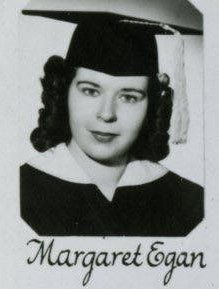
Margaret Egan Namovic was a 1951 Mundelein graduate. Egan Namovic recollects her Chicago, Irish Catholic family background and the decision making process that resulted in her attendance at Mundelein. Egan Namovic loved her experiences at Mundelein and asserts that it, “opened up the world” for her. She majored in Physics and recollects her experiences with the eminent Mundelein physicist and professor, Sister Therese Langerbeck who was “like a second mother to her.” Egan Namovic recounts her participation in the Red Cross as a student and her early professional career as a chemist for several companies including Kraft Foods where she developed innovative food products. Egan Namovic concludes her interview by recounting her experiences as a young mother of many children in Skokie, Illinois.
-
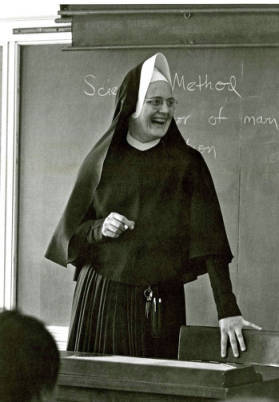
Sister Irene Meyer, BVM reflects on how Mundelein College shaped her as a graduate of the class of 1951. She grew up in a German Lutheran family, but was interested in the Catholic Church, and chose Mundelein because it was Catholic. Sister Irene studied Psychology and played in the college’s orchestra. She received her doctorate at St. Louis University, returning to Mundelein to teach Psychology and Continuing Education. Mundelein emphasized service learning, which she advocated. Sister Irene finishes talking about her career later in life working in public health at a community health center and through her own private practice.
-

Sister Judith Therese McNulty, BVM considers her the impact of Mundelein College upon her life as an alumna of the class of 1951. She grew up in an Irish Catholic family. Sister Judith Therese attended Mundelein because she lived in St. Gertrude’s Parish. Her classmates were some of her best and lasting friends. She enjoyed her classes, as well as her extracurricular activities at Mundelein. The college fostered leadership among the women. Sister Judith Therese concludes the interview by evaluating why single-sex schools have closed, considering finances and increasing comfort between men and women.
-
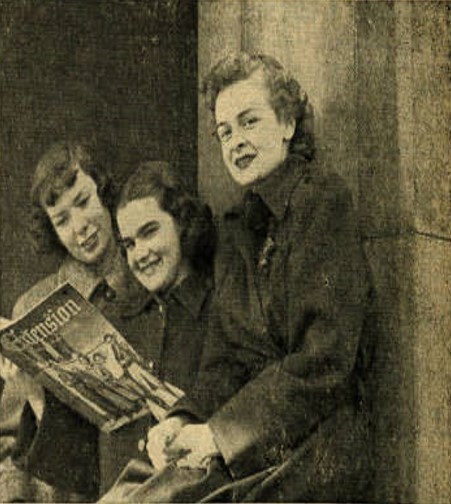
Joan Holland was a 1951 graduate of Mundelein College. Holland discusses her childhood in Evanston, Illinois and her high school experiences at Loretto Academy in Hamilton, Ontario. Holland was a child actress and she briefly outlines her “Hollywood” experiences on the set of several movies including the award winning, The Great Ziegfeld. Holland discusses her experiences at Mundelein, in particular her recollections of English professor, Sister Irma Corcoran, her best friend among the Mundelein faculty. Holland discusses her social activism after her graduation, including a 1989 peace march which took her to several cities including Washington D.C. and Philadelphia.
-
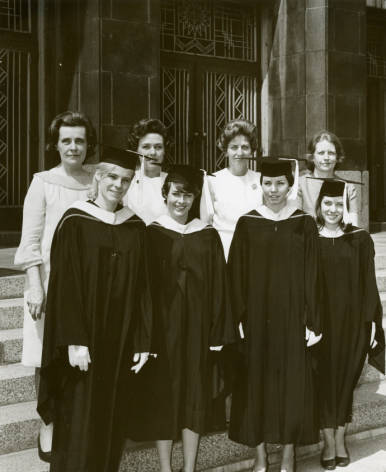
Member of the Mundelein Class of 1938, Kay Heerey Sullivan begins her interview by recollecting her early educational pathway from Chicago’s Siena High School to Mundelein College. Heerey Sullivan was an Economics major and she relays her fondness for Sister Mary Pierre Flynn who taught in the department and became a lifelong friend to her students. Heerey Sullivan was on the staff of the student paper, The Skyscraper and was involved with the Chicago Inter-Student Catholic Action, CISCA. Heerey Sullivan reflects on cooperation between Loyola and Mundelein which enriched their students’ social and educational experiences.
-
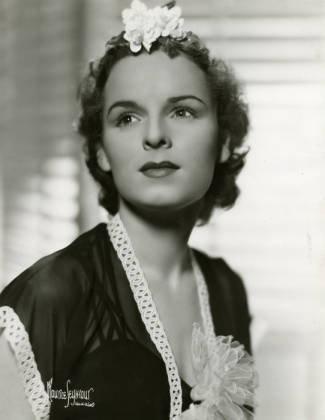
McCambridge focuses her solo interview on Sister Mary Leola Oliver, BVM and how she influenced her life. She grew up on the South Side of Chicago, attending college at Mundelein. McCambridge began her association with sister right as she began in college and took performing arts classes. Oliver emphasized diction, body movement, and overall excellence. The choir that Oliver composed of Mundelein students gained citywide attention and eventually performed on NBC. That particular moment pushed McCambridge into fame. She credits all of her success in the interview not to herself, but rather to Sister Mary Leola Oliver.













